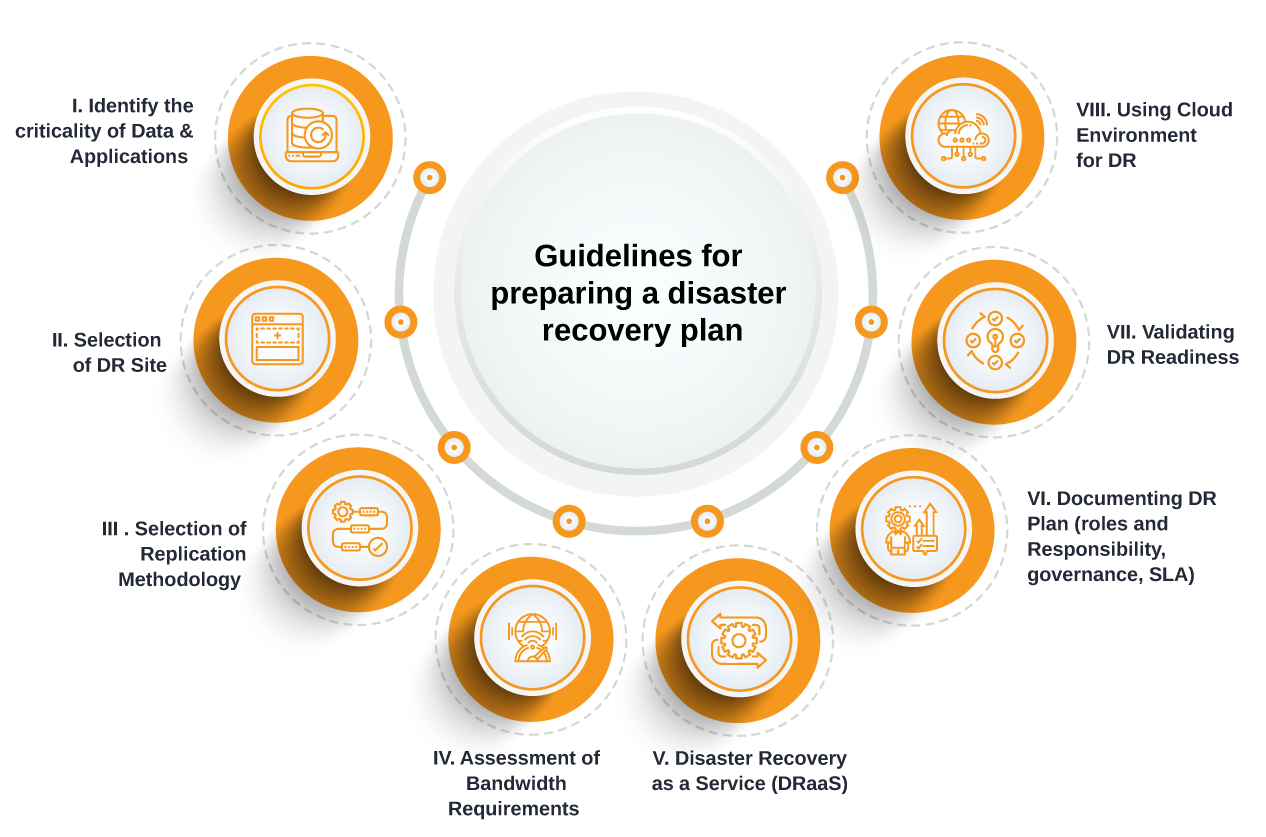Disaster Recovery
Create your disaster recovery plan and drive business growth
Looking for Cloud Services?
Send Us a Message

Create your disaster recovery plan and drive business growth


Disaster Recovery (DR) covers the procedures and processes that prepare an organization’s vital IT infrastructure to effectively recover from natural like cyber-attacks and equipment failure or through natural disasters like hurricanes, earthquakes ensure business continuity.
Companies rarely get advance notice when a disaster strikes. Without a business plan, the organization may struggle to get out of business or recover. The good news is that organizations can protect themselves from consequences with a business sustainability plan. DBS can help you develop a disaster recovery (DR) plan that enables you to balance reliable protection and efficient allocation of DR resources.

Businesses can choose from a variety of disaster recovery methods, or combine several:

The simplest type of disaster recovery and entails storing data off site or on a removable drive. It provide very little business continuity as the infrastructure is not available.

Cold sites are unused until a disaster occurs. An alternate site with basic or little infrastructure from where users can shift to if the primary sites faces a disaster situation.

A hot backup has equipment set up with current data available all the time. These sites are expensive to setup but reduce down time to minimal.

Service provider moves the client computer processing to their own servers. Client users are able to work seamlessly from the same location.

Backup as a service (BaaS) is a modern alternative to traditional data backup approaches. It is a method of offsite data storage in which entire contents of a hard drive are regularly backed up by a service vendor and is available whenever required.

The physical elements of a data center can protect data and contribute to faster disaster recovery in certain types of disasters
Cloud-based solutions allow your organization to exit the cloud or restore your critical data and systems anywhere. Minimizing the manual processing of traditional recovery methods helps you get your system back online faster in the event of an IT disaster.
Cloud-based solutions allow for frequent, seamless testing of IT disaster recovery efforts enabling organizations to test recovery point targets and time targets with high accuracy, enhancing your disaster recovery plan.
Quickly deploy cloud-based disaster recovery to all locations within the enterprise. The cloud model provides continuity, simplified management, and support.
With cloud-based solutions, organizations can benefit from service providers' skills and specialized knowledge. They can start without a significant investment in hardware or software and without much training.
Organizations using cloud-based disaster recovery solutions can take advantage of the "as-you-grow" model by aligning costs with the scale and complexity of their IT disaster recovery needs.

We manage it completely so you can focus on other things

We follow industry best practices for DR

Certified and experienced team of DR experts

We provide the best fit and cost effective solutions based on business requirement

Experience of working with Enterprise and SME customers
Discus Business Solutions manages our IT landscape which includes SAP, infrastructure, software and user support. Pharma being a very regulated industry we wanted a partner who can understands our business, compliance & end user requirements. They have been our partner since 2 years, they have been managing our day to day IT operations. With their IT support we are assured that if there is any issues than it will be resolved in a timely manner with proper RCA keeping long term approach in mind
DBS has been our SAP global infrastructure and AWS support partner for more than 5 years. One of our most seamless SAP project has been migration to cloud which was planned and managed by the DBS team. Their support team is proactive and ensures our SAP runs flawlessly and whenever support is required they are available
Discus Business Solutions successfully helped us migrate our on-premises SAP databases to AWS. After careful planning, the migration was carried out without any disturbance to our business processes. The day-to-day management of SAP is also in good hands at Discus Business Solutions.

How Discus overcame the Scalability issues of one of the major pharma company in Europe by providing fully automated deployment operations with zero operational burdens.